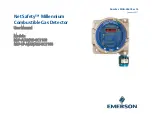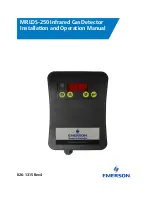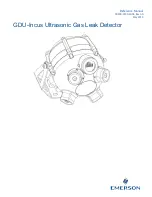
Installation
49
It is still necessary, however, to ensure that the machine is not subjected to excessive electrical noise
via its supply or airborne sources.
Selection of Frequency Band
If two or more metal detectors sited within the same area are operating at the same frequency, then
they will interfere with each other leading to false rejects and unstable operation.
To overcome this problem, the detectors can be set to operate on one of ten different bands through
the
Search Head Setup
screen. It is therefore very important to ensure that detectors operating near
one another are set to operate at different bands. See
Frequency Selection
for further details.
Other EMC considerations
Any signal I/O which is connected to the auxiliary connections should be in screened cable, grounded
at one end by a low impedance path to RF, and kept free from sources of electrical noise (e.g. mains
supplies for large electrical machines).
The metal detector is a highly sensitive RF measuring device, which is well screened from outside
interference and has excellent electronic discrimination against unwanted electromagnetic fields.
However, due to its sensitivity it is possible that other devices which emit high levels of RF noise at
the operating frequency of the detector could cause interference, thereby degrading the performance
of the detector.
It is therefore important to avoid siting the detector next to any devices which emit abnormally high
levels of RF interference if proper operation is to be maintained.
Radio Frequency Interference
A metal detector is, essentially, a Radio Frequency (RF) transmitter and receiver. As such it is
sensitive to RF noise in the general vicinity of the detector location. Whilst those frequencies not close
to the operating frequency of the detector will usually be filtered out (this includes most ‘walkie talkie’
frequencies, unless the transmitter is held very close to the detector aperture), it is not uncommon for
the control frequency (or multiple of it), used in modern speed controllers, to cause interference.
To reduce the risks of such interference causing false rejects or other symptoms of undesirable
operation at the metal detector, the following recommendations should be followed:
■
Always route speed controller input and output wiring away from the metal detector area.
NEVER put speed controller wiring in the same conduit or on the same supply as the metal
detector wiring.
■
Run speed controller wiring in the general vicinity of the metal detector in a rigid steel conduit or
use other techniques to ensure 100% screening of the cable.
■
Always follow the speed controller manufacturer’s instructions for installation, wiring, screening
and grounding.
In addition to following these guidelines, most speed controller manufacturers supply input and output
filters which can be fitted to the field wiring to dramatically reduce RF emissions if necessary.
All Loma metal detectors are designed, and tested, to meet the requirements of the FCC and the new
stringent European regulations for RF emissions, both in terms of not emitting excessively and not
being subject to undesirable operation in the presence of other equipment whose emissions also
meet the standards. This approach allows Loma to offer stable operation even in RF noisy
environments, provided the other equipment is to the same standards and the field wiring is suitable
‘hard’.
Содержание IQ3+
Страница 2: ......
Страница 36: ...Safety First 26 THIS PAGE IS INTENTIONALLY LEFT BLANK ...
Страница 43: ...Installation 33 ...
Страница 60: ...Installation 50 THIS PAGE IS INTENTIONALLY LEFT BLANK ...
Страница 70: ...About the Metal Detector Range 60 THIS PAGE IS INTENTIONALLY LEFT BLANK ...
Страница 218: ...Operating Instructions 208 THIS IS PAGE INTENTIONALLY LEFT BLANK ...
Страница 244: ...Maintenance 234 THIS PAGE IS INTENTIONALLY LEFT BLANK ...
Страница 248: ...Glossary 238 THIS PAGE IS INTENTIONALLY LEFT BLANK ...
















































